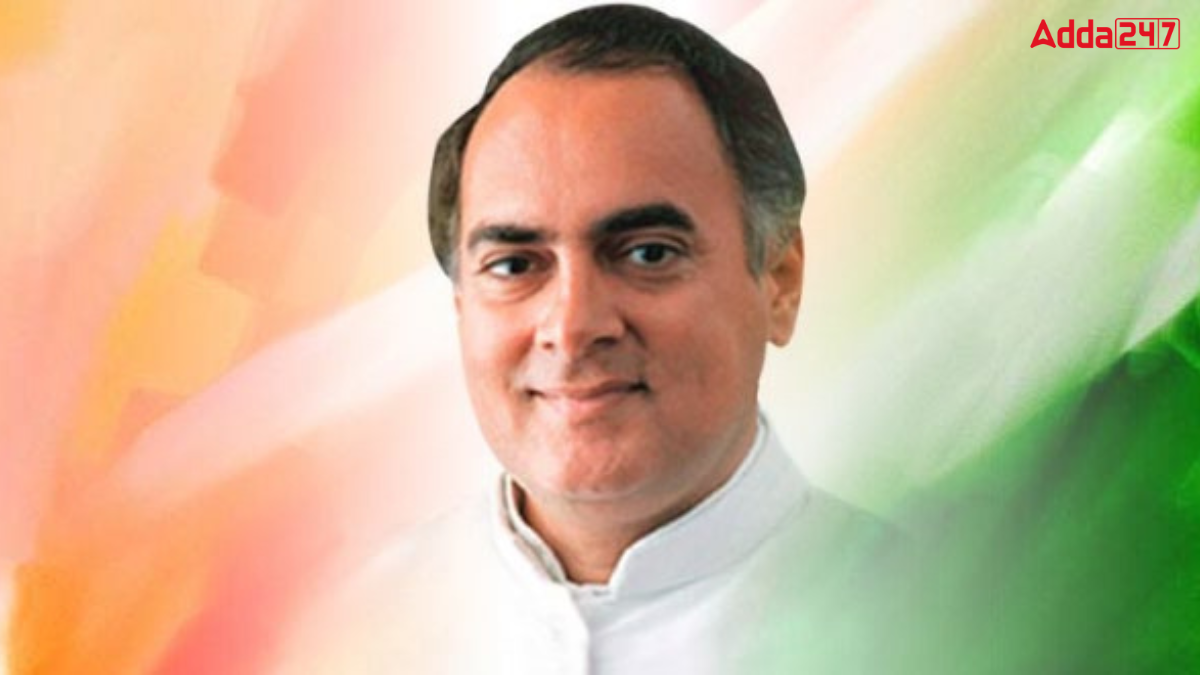Rajiv Gandhi was the 7th Prime Minister of India and also the youngest leader to take up this role. He became Prime Minister in 1984 after the unfortunate assassination of his mother, Indira Gandhi. Before joining politics, he worked as a pilot. Rajiv Gandhi is remembered for introducing modern technology and computers to India and for working to make the nation more advanced and stronger.
Early Life and Education of Rajiv Gandhi
Rajiv Gandhi was born on August 20, 1944, in Bombay (now Mumbai). He was the son of Indira Gandhi and Feroze Gandhi. He studied in different schools including Welham Boys’ School and Doon School in Dehradun.
In 1961, he went to London for his higher studies. He joined Trinity College and later Imperial College, but he didn’t complete his engineering degrees. He came back to India in 1966 and joined a flying club in Delhi. In 1970, he became a pilot with Air India.
Rajiv Gandhi – Family and Personal Life
In 1968, Rajiv Gandhi married Edvige Antonia Albina Maino, who later became known as Sonia Gandhi. They had two children – Rahul Gandhi (born in 1970) and Priyanka Gandhi (born in 1972).
Entry into Politics
Rajiv Gandhi was not interested in politics at first. But after the death of his younger brother Sanjay Gandhi in a plane crash in 1980, many Congress Party leaders requested him to join politics. He finally agreed, saying it would help his mother.
He gave his first political speech in 1981 and contested from Amethi, winning by a big margin. That same year, he became a Member of Parliament.
Becoming Prime Minister
After his mother, Indira Gandhi, was assassinated on October 31, 1984, Rajiv Gandhi became the youngest Prime Minister of India at the age of 40. He led the Congress Party to a huge win in the elections and officially became the President of the party.
Works as Prime Minister
Rajiv Gandhi brought many changes during his time as Prime Minister:
- In 1985, he passed the anti-defection law to stop party switching.
- He launched the National Policy on Education in 1986 to improve schools and colleges.
- He started Jawahar Navodaya Vidyalayas, which are free boarding schools in rural areas.
- He helped improve telephone services by starting MTNL and PCOs.
- He supported Operation Bank Thunder in Punjab to remove terrorists from the Golden Temple.
- He signed the Indo-Sri Lanka Accord in 1987 to bring peace in Sri Lanka.
- He sent Indian troops to help in Seychelles and Maldives to stop coups.
- He played an important role in re-capturing the Siachen Glacier area from Pakistan.
Controversies
One of the biggest controversies during his time was the Shah Bano case. The Supreme Court gave justice to a divorces Muslim woman, but Rajiv Gandhi’s government passed a law that went against the court’s decision. Many people criticized this.
He also made changes in his Cabinet and removed some minor senior ministers who didn’t meet his expectations.
Assassination of Rajiv Gandhi
On May 21, 1991, Rajiv Gandhi was assassinated during a political rally at Sriperumbudur, near Chennai. A woman with a bomb hidden under her dress touched his feet and blew herself up. Rajiv Gandhi and 25 others died in the blast. He was only 46 years old.
His body was flown to AIIMS, Delhi, for post-mortem. A state funeral was held on May 24, 1991, at Veer Bhumi, near the memorials of Nehru, Indira Gandhi and Sanjay Gandhi. Leaders from over 60 centuries attended the ceremony.
After his Death
After his death, Rajiv Gandhi was given India’s highest civilian award – Bharat Ratna. His legacy is remembered every year through Sadbhavana Diwas, which promotes peace and harmony.



 Which Indian City is Known as the Footwe...
Which Indian City is Known as the Footwe...
 Which Desert is known as the Cold Desert...
Which Desert is known as the Cold Desert...
 Top-10 News Media Companies in the World...
Top-10 News Media Companies in the World...







